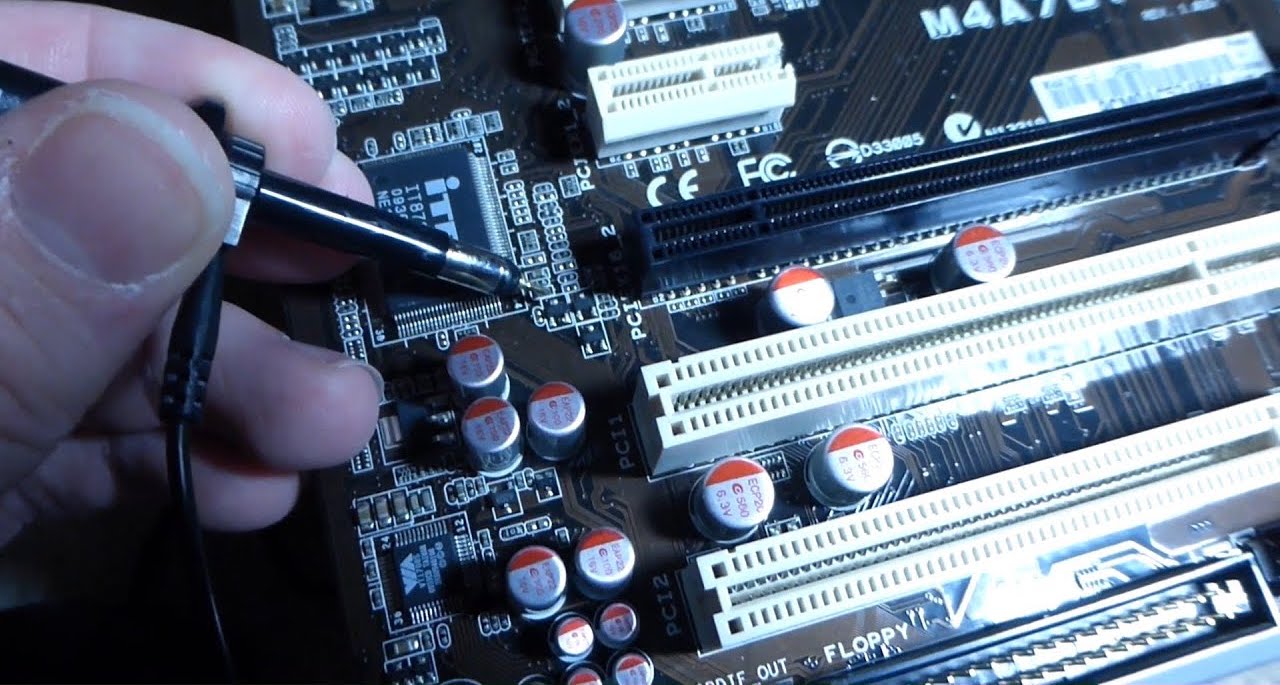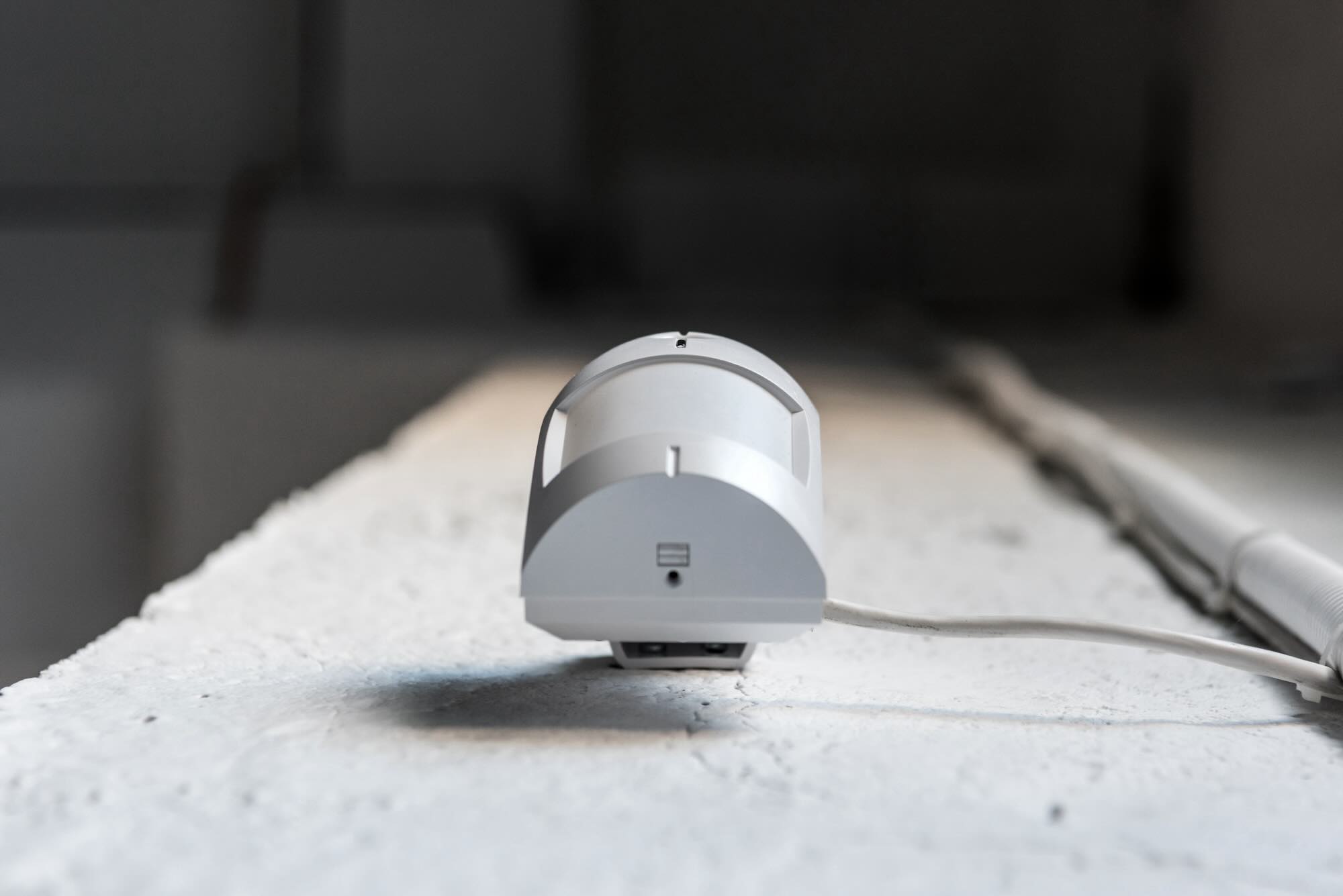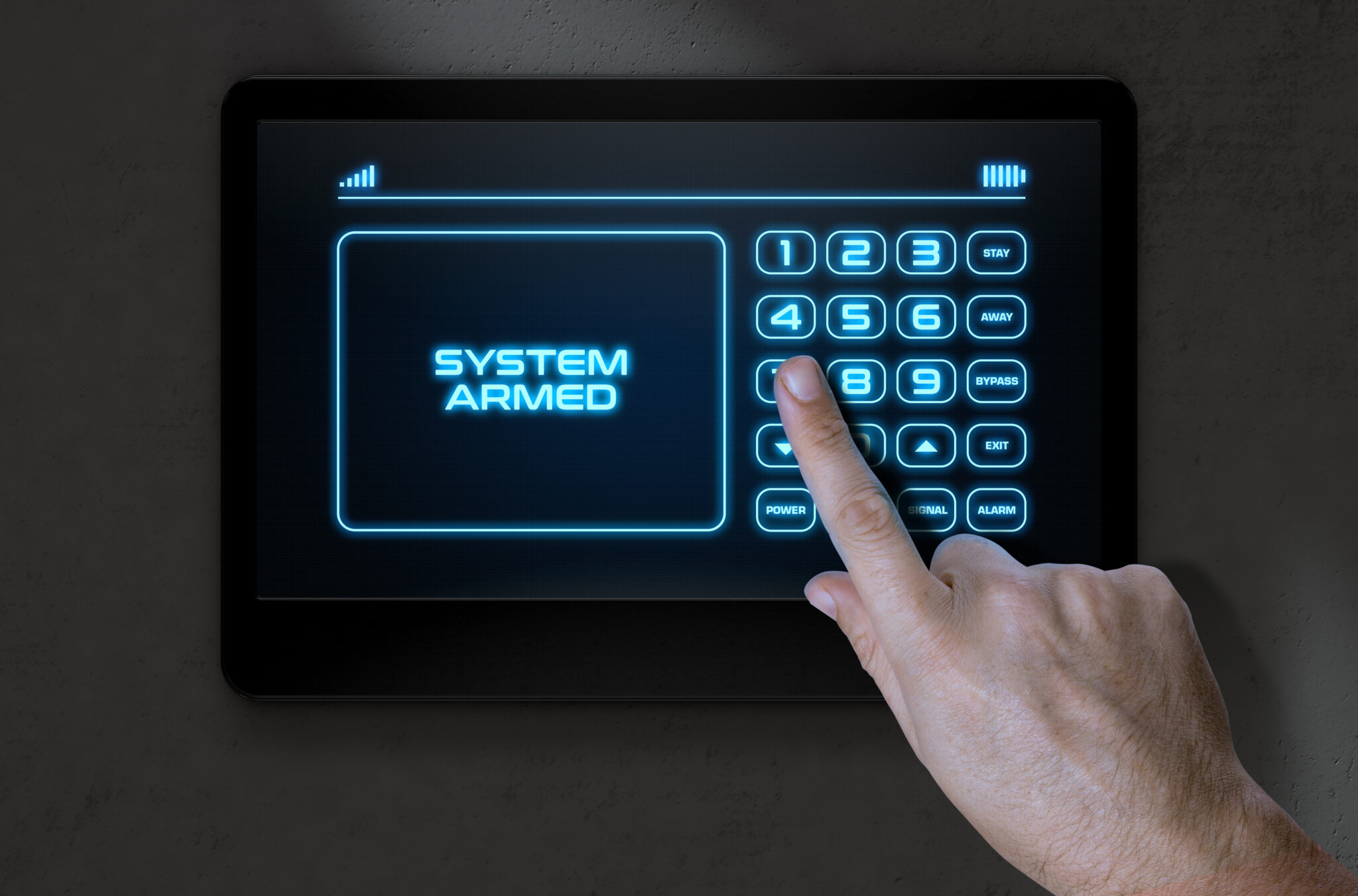Home>Home Security and Surveillance>What Is Chassis Intrusion Detection


Home Security and Surveillance
What Is Chassis Intrusion Detection
Modified: October 20, 2024
Discover the importance of Chassis Intrusion Detection for home security and surveillance. Learn how it keeps your valuables safe with advanced monitoring and alert systems.
(Many of the links in this article redirect to a specific reviewed product. Your purchase of these products through affiliate links helps to generate commission for Storables.com, at no extra cost. Learn more)
Introduction
Welcome to the world of home security and surveillance! In today’s digital age, securing our homes and protecting our loved ones has become more crucial than ever. With the advancements in technology, home security systems have evolved to provide comprehensive protection against intruders and potential threats. One such innovation in the field of home security is chassis intrusion detection.
Chassis intrusion detection refers to the ability of a security system to detect unauthorized access or tampering attempts on the physical components of computer systems or other electronic devices. By monitoring the status of the chassis and alerting the homeowners or security personnel of any unauthorized access, chassis intrusion detection plays a vital role in ensuring the safety and integrity of a home security system.
But why is chassis intrusion detection so important? Let’s dive deeper into this topic to understand its significance and how it works.
Key Takeaways:
- Chassis intrusion detection is like a security guard for electronic devices, alerting homeowners if someone tries to tamper with them, providing peace of mind and data protection.
- While chassis intrusion detection systems have limitations like false alarms, they offer enhanced security, early detection, and deterrence against physical attacks on electronic devices.
Read more: What Is Wireless Intrusion Detection
Definition of Chassis Intrusion Detection
Chassis intrusion detection, also known as physical intrusion detection or tamper detection, is a security feature that specifically focuses on detecting unauthorized access or tampering with the physical components of electronic devices. It is designed to monitor and protect the integrity of a device’s chassis, which houses its critical internal components.
By utilizing various sensors, such as switches, tamper switches, or motion detectors, chassis intrusion detection systems are capable of detecting any physical changes or anomalies within the device. These sensors are strategically placed throughout the chassis, covering the access points, such as doors, panels, or lids, to ensure comprehensive protection.
When an intrusion or tampering attempt is detected, the chassis intrusion detection system generates an alert or triggers an alarm to immediately notify the homeowners or the security personnel. This alert serves as an early warning system, enabling prompt action to be taken to mitigate any potential threats or damages.
Chassis intrusion detection is commonly used in a wide range of electronic devices and systems, including computers, server racks, network equipment, CCTV systems, home security systems, and control panels. It is an essential component of a holistic security strategy, providing an additional layer of protection beyond software-based security measures.
Now that we have a clear understanding of what chassis intrusion detection entails, let’s delve into why it is such a crucial aspect of home security and surveillance systems.
Importance of Chassis Intrusion Detection
Chassis intrusion detection plays a critical role in ensuring the overall effectiveness and reliability of home security and surveillance systems. Here are some key reasons why chassis intrusion detection is important:
- Physical Protection: Chassis intrusion detection provides an additional layer of physical protection to electronic devices. It helps prevent unauthorized access and tampering, reducing the risk of theft, vandalism, or sabotage.
- Data Integrity: In addition to protecting the physical components of a device, chassis intrusion detection safeguards the data and information stored within. Unauthorized access or tampering attempts, if undetected, can compromise sensitive data, affecting the overall security and privacy of the homeowners or the organization.
- Early Warning System: Chassis intrusion detection acts as an early warning system, alerting homeowners or security personnel immediately when unauthorized access is detected. This allows for rapid response and intervention, minimizing the potential damage or loss.
- Enhanced Security: By combining chassis intrusion detection with other security measures, such as alarms, surveillance cameras, and access control systems, homeowners can create a comprehensive security system. This integrated approach maximizes the effectiveness of the security measures and reduces vulnerabilities.
- Compliance: Certain industries, such as healthcare and financial sectors, have strict compliance regulations to protect sensitive data. Chassis intrusion detection helps organizations meet these compliance requirements by ensuring the physical security of their devices and preventing unauthorized access.
Overall, chassis intrusion detection is crucial for maintaining the physical security and integrity of electronic devices. By detecting and alerting homeowners or security personnel of any unauthorized access or tampering attempts, it provides peace of mind and confidence in the reliability of the home security system.
How Chassis Intrusion Detection Works
Chassis intrusion detection systems employ various methods to monitor and detect unauthorized access or tampering attempts on electronic devices. Let’s explore the key components and processes involved:
- Sensors: Chassis intrusion detection systems utilize sensors strategically placed throughout the device’s chassis. These sensors can include switches, tamper switches, vibration sensors, or motion detectors. Their purpose is to detect any physical changes or movements that may indicate unauthorized access or tampering.
- Monitoring and Analysis: The sensors constantly monitor the physical status of the device’s chassis. They compare the current state with a predefined baseline or normal state. Any deviation from the baseline triggers an alert, indicating potential unauthorized access or tampering.
- Alert Generation: When an intrusion attempt is detected, the chassis intrusion detection system generates an alert. The alert can be in the form of a visual notification on a control panel, an audible alarm, or a notification sent to a mobile device or a central monitoring station.
- Response and Action: Upon receiving the alert, homeowners or security personnel can take appropriate action to address the intrusion attempt. This can involve checking the footage from surveillance cameras, dispatching security personnel, or remotely locking down the device to prevent further access.
It is important to note that chassis intrusion detection can be integrated with other security systems, such as access control systems and surveillance cameras. This integration allows for a more comprehensive and proactive approach to security. For example, if an intrusion is detected, access to the device can be automatically disabled, and surveillance cameras can be triggered to record the event.
Chassis intrusion detection systems vary in their complexity and features, depending on the specific requirements and the type of device being protected. Some advanced systems may incorporate machine learning algorithms to refine the detection capabilities and minimize false alarms.
Overall, chassis intrusion detection systems provide continuous monitoring and analysis of the physical components of electronic devices, ensuring the prompt detection of unauthorized access or tampering attempts.
Benefits of Chassis Intrusion Detection
Chassis intrusion detection offers several benefits that contribute to the overall security and peace of mind of homeowners. Let’s explore some of the key advantages:
- Enhanced Security: By detecting and alerting homeowners or security personnel of unauthorized access or tampering attempts, chassis intrusion detection greatly improves the security of electronic devices. This discourages potential intruders and provides a proactive defense against physical attacks.
- Early Detection: Chassis intrusion detection systems provide early detection of any unauthorized access or tampering attempts on electronic devices. This early warning allows for swift response and intervention, minimizing potential damage or loss.
- Data Protection: Chassis intrusion detection not only protects the physical components of a device but also safeguards the sensitive data stored within. By detecting unauthorized access or tampering attempts, it helps prevent data breaches and maintains the confidentiality and integrity of data.
- Deterrent Effect: The presence of chassis intrusion detection systems acts as a deterrent to potential intruders or unauthorized personnel. The knowledge that a device is protected by such a system can discourage individuals from attempting to gain unauthorized access, reducing the risk of tampering or theft.
- Comprehensive Security Strategy: Chassis intrusion detection is an essential component of a holistic security strategy. When combined with other security measures such as alarms, surveillance cameras, and access control systems, it creates a comprehensive defense system that covers both physical and digital aspects of security.
- Peace of Mind: Knowing that electronic devices are protected by chassis intrusion detection systems provides homeowners with peace of mind. They can confidently leave their homes or businesses, knowing that their valuable assets are being monitored and protected.
- Compliance: For organizations that deal with sensitive data, chassis intrusion detection helps meet industry compliance requirements. It ensures the physical security of devices and assists in fulfilling data protection regulations.
Overall, chassis intrusion detection offers numerous benefits, including enhanced security, early detection, data protection, deterrence, comprehensive security strategy, peace of mind, and compliance support. Investing in a reliable chassis intrusion detection system is a wise decision to protect electronic devices and maintain a secure environment.
Make sure to enable chassis intrusion detection in your computer’s BIOS settings. This feature will alert you if someone opens the computer case, helping to prevent unauthorized access or tampering with the internal components.
Read more: What Is An Audit And Intrusion Detection
Limitations of Chassis Intrusion Detection
While chassis intrusion detection systems provide valuable protection and security, it is important to be aware of their limitations. Understanding these limitations helps homeowners make informed decisions when implementing security measures. Here are some common limitations:
- False Alarms: Chassis intrusion detection systems can occasionally generate false alarms due to environmental factors or technical glitches. These false alarms can be disruptive and may cause homeowners to become complacent or disregard genuine threats.
- Physical Bypass: Sophisticated intruders may find ways to bypass or disable chassis intrusion detection systems. They can tamper with sensors, manipulate wiring, or exploit system vulnerabilities, rendering the security measures ineffective.
- Limited Coverage: Chassis intrusion detection systems can only monitor and protect the physical components within the device’s chassis. They do not extend beyond the immediate physical boundaries of the device, leaving other areas vulnerable to intrusion or tampering.
- Cost: Implementing a reliable chassis intrusion detection system can involve significant costs. The purchase and installation of sensors, integration with existing security systems, and ongoing maintenance and updates can be expensive, making it a financial consideration for homeowners.
- Dependency on Power: Chassis intrusion detection systems rely on a continuous power supply to function effectively. Power outages or disruptions can temporarily disable the system, leaving the device vulnerable during these periods.
- Compatibility and Integration: Integrating chassis intrusion detection systems with existing security infrastructure or control systems can pose compatibility challenges. Ensuring seamless integration requires careful planning and sometimes additional investment.
- Human Error: The effectiveness of chassis intrusion detection systems relies on proper setup, configuration, and monitoring. Human error, such as inadequate sensor placement, misconfiguration, or failure to respond to alerts, can compromise the system’s performance.
Despite these limitations, chassis intrusion detection systems remain a valuable component of a comprehensive security strategy. Homeowners and security professionals should be aware of these limitations and take appropriate measures to mitigate them, such as regular system maintenance, employee training, and strategic placement of sensors.
By understanding the limitations and actively addressing them, homeowners can optimize the effectiveness of chassis intrusion detection systems and enhance the overall security of their homes and businesses.
Common Chassis Intrusion Detection Technologies
Chassis intrusion detection systems employ different technologies to monitor and detect unauthorized access or tampering attempts. Each technology has its own advantages and considerations. Let’s explore some of the commonly used chassis intrusion detection technologies:
- Magnetic Switches: Magnetic switches are simple yet effective devices that consist of a magnet and a switch. The magnet is placed on the chassis, while the switch is mounted nearby. When the chassis is closed, the magnet keeps the switch in a closed position. If the chassis is opened, the magnet moves away, causing the switch to open and trigger an alert.
- Vibration Sensors: Vibration sensors detect any physical vibrations or movements on the device’s chassis. They can detect tampering attempts, such as drilling or opening the chassis. These sensors are sensitive to vibrations and can trigger an alert when significant movements are detected.
- Optical Sensors: Optical sensors utilize infrared or laser technology to detect interruptions or changes in light paths. These sensors are placed near access points, and when the chassis is opened, it interrupts the light path, triggering an alert.
- Tamper Evident Labels: Tamper-evident labels are stickers or seals that are placed on access points of the device’s chassis. These labels are designed to break or show signs of tampering when someone tries to remove or open the chassis. Once the label is tampered with, it provides visual evidence of unauthorized access.
- Accelerometers: Accelerometers detect changes in physical acceleration and motion. They are often used in mobile devices or laptops to detect falls or sudden movements. In the context of chassis intrusion detection, accelerometers can also be used to detect unauthorized movement or tilting of the device’s chassis.
These are just a few examples of chassis intrusion detection technologies. The choice of technology depends on factors such as the type of device, level of sensitivity required, and specific security needs. It is essential to assess the device’s characteristics and the desired level of protection when selecting the appropriate technology.
Furthermore, some chassis intrusion detection systems combine multiple technologies for enhanced accuracy and reliability. For instance, a system may use magnetic switches along with vibration sensors to provide more comprehensive coverage and reduce false alarms.
Implementing the right combination of chassis intrusion detection technologies ensures robust protection against unauthorized access and tampering attempts, strengthening the overall security of electronic devices.
Chassis Intrusion Detection Implementation Considerations
Implementing a chassis intrusion detection system requires careful consideration and planning to ensure its effectiveness. Here are some key considerations to keep in mind:
- Device Compatibility: Different devices may have varying chassis designs and dimensions. It is crucial to ensure that the chosen chassis intrusion detection system is compatible with the specific device and can be effectively integrated.
- Sensor Placement: Proper sensor placement is essential for accurate detection. Sensors should be strategically positioned to cover the access points and vulnerable areas of the device’s chassis. This ensures comprehensive coverage and minimizes blind spots.
- False Alarm Reduction: False alarms can be disruptive and can lead to complacency or disregard for genuine threats. Opt for chassis intrusion detection systems that employ advanced technologies and algorithms to minimize false alarms, ensuring reliable and accurate detection.
- Notification and Alerts: When an intrusion or tampering attempt is detected, the system should generate timely and clear alerts. Consider how alerts will be communicated, whether through a control panel, mobile notifications, or integration with a central monitoring system.
- Integration with Security Systems: Integrating chassis intrusion detection with other security systems, such as access control, surveillance cameras, or alarm systems, enhances the overall security infrastructure. Ensure compatibility and seamless integration between the different systems for a more comprehensive security solution.
- Ongoing Maintenance: Chassis intrusion detection systems require periodic maintenance and testing. Regularly inspect and calibrate the sensors, replace batteries if applicable, and ensure that the system is functioning optimally. Stay up to date with firmware updates and security patches to address any vulnerabilities.
- Security Policies and Response Protocols: Define clear security policies and response protocols for handling potential intrusion or tampering incidents. Train personnel on how to respond to alerts, escalate incidents when necessary, and log and report any security events for analysis and future prevention.
- System Scalability: Consider the scalability of the chassis intrusion detection system, especially if you plan to expand or upgrade your security infrastructure in the future. Choose a system that can accommodate the changing needs of your home or business.
- Regular Evaluation and Updates: Security threats evolve over time, and technology advances rapidly. Regularly evaluate the effectiveness of your chassis intrusion detection system and update it as needed to stay ahead of potential threats and ensure optimal security.
By carefully considering these implementation factors, homeowners can maximize the effectiveness of their chassis intrusion detection systems and create a robust security framework to protect their valuable assets.
Examples of Chassis Intrusion Detection Systems
There are various chassis intrusion detection systems available in the market, each with its unique features and capabilities. Here are a few examples of popular chassis intrusion detection systems:
- ADT Pulse®: ADT Pulse® is a comprehensive home security and automation system that includes chassis intrusion detection capabilities. It offers a range of sensors and monitoring devices to detect unauthorized access or tampering attempts on electronic devices within the home. ADT Pulse® provides real-time notifications and remote access to the security system, allowing homeowners to monitor and control their security from anywhere.
- Bosch Security Systems: Bosch Security Systems offers a range of chassis intrusion detection solutions suitable for various applications. Their systems utilize sensors such as magnetic contacts and vibration detectors to detect any physical tampering on electronic devices. Bosch Security Systems integrates with their broader suite of security products, including access control and video surveillance, providing comprehensive protection.
- Honeywell Intrusion Systems: Honeywell’s intrusion detection systems include chassis intrusion sensors designed for various applications. They offer sensors ranging from magnetic contacts to tamper switches, providing accurate and reliable detection of unauthorized access or tampering attempts. These systems can be integrated with Honeywell’s broader security solutions, offering a comprehensive security framework for homes and businesses.
- DSC (Digital Security Controls): DSC offers a range of intruder alarm systems that include chassis intrusion detection features. Their sensors are designed to detect physical movements or changes in the device’s chassis and trigger alerts when unauthorized access is detected. DSC systems can be integrated with other security components, such as surveillance cameras or access control systems, for a more comprehensive security solution.
- Axis Communications: Axis Communications offers a line of network cameras and video encoders equipped with chassis intrusion detection capabilities. These devices have built-in sensors that detect physical tampering and trigger alarms or send notifications to the user or central monitoring station. Axis Communications’ products can be integrated with their comprehensive video management software for enhanced security and surveillance.
These are just a few examples of reputable chassis intrusion detection system providers. It is important to evaluate your specific security needs, budget, and compatibility requirements when selecting a system. Consulting with security professionals or conducting thorough research will help identify the most suitable chassis intrusion detection system for your home or business.
Remember, the effectiveness of the system depends not only on the technology but also on proper installation, maintenance, and integration with other security components in your overall security framework.
Read more: What Is The Best Intrusion Detection System?
Conclusion
Chassis intrusion detection is a vital aspect of home security and surveillance systems, providing protection against unauthorized access and tampering attempts. By constantly monitoring the physical components of electronic devices, these systems offer enhanced security, early detection, and data integrity.
While chassis intrusion detection systems have their limitations, such as false alarms and physical bypass vulnerabilities, careful consideration and implementation can minimize these drawbacks and maximize their effectiveness.
When implementing a chassis intrusion detection system, factors such as device compatibility, sensor placement, false alarm reduction, integration with other security systems, and ongoing maintenance should be taken into account. Clear security policies, response protocols, and regular evaluation are crucial to maintaining a robust security infrastructure.
Examples of chassis intrusion detection systems from companies like ADT, Bosch Security Systems, Honeywell, DSC, and Axis Communications showcase the variety of options available in the market. However, it is important to select a system that meets the specific needs of your home or business.
Overall, chassis intrusion detection plays a significant role in safeguarding electronic devices, protecting sensitive data, and providing homeowners with peace of mind. By combining technological advancements with proper implementation and maintenance, homeowners can create a comprehensive and effective security solution that addresses both physical and digital threats.
Frequently Asked Questions about What Is Chassis Intrusion Detection
Was this page helpful?
At Storables.com, we guarantee accurate and reliable information. Our content, validated by Expert Board Contributors, is crafted following stringent Editorial Policies. We're committed to providing you with well-researched, expert-backed insights for all your informational needs.













